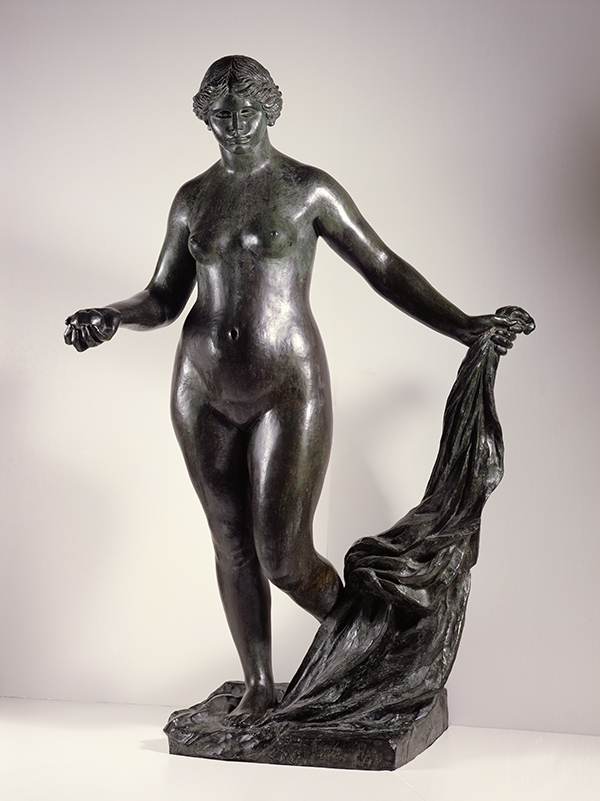
JUNE 8–SEPTEMBER 22, 2019
RENOIR AND SCULPTURE
Pierre-Auguste Renoir (French, 1841-1919), with Richard Guino (Spanish, 1890-1973), Venus Victorious, 1914. Bronze, 71 7/8 × 32 × 43 3/4 in. Clark Art Institute, Williamstown, Massachusetts. Acquired by the Clark, 1970
After moving to Les Collettes in the south of France in 1909, and in spite of almost insurmountable physical frailties, Renoir actively continued to experiment with form. Encouraged by his art dealer and friend Ambroise Vollard, Renoir turned to sculpture, first making small medallions before later conceiving larger works with the aid of assistants. His figures took on the proportions of a Greco-Roman Venus, with narrow shoulders and swelling hips. The monumentality that he had long sought to achieve in paint had now transformed into three dimensions.
Between 1913 and 1918 Renoir employed the Catalan artist Richard Guino, who had previously worked for Aristide Maillol, and the two embarked on Renoir’s first large-scale bronze, Venus Victorious, which Vollard commissioned. Guino studied at fine art schools in Catalonia before moving to Paris at age twenty, meeting Renoir three years later. While the young sculptor had a distinct point of view, assisting Renoir required him to suppress his independent stylistic impulses. In the case of Venus Victorious, Renoir first made a clay statuette, which Guino turned into a wax model under Renoir’s supervision, and finally a Parisian foundry cast the model in bronze. After their collaboration ended in 1918, Guino exhibited his original works and attempted to break free of associations with Renoir; he eventually reversed course, however, fighting for acknowledgement as Renoir’s sculptural “coauthor.”
Renoir also collaborated with the sculptor Louis Fernand Morel during the final year of his life. Born in Essoyes—the same village as Renoir’s wife Aline Charigot—he studied at the École des Beaux-Arts and participated in the 1908 Prix de Rome contest. Morel modeled terracotta reliefs from earlier Renoir paintings that were all thematically unified in their celebration of music and dance. Working with the Renoir family after the painter’s death, Morel continued to produce an unknown number of these classical reliefs in bronze and terracotta during the mid-twentieth century.
Offering the first-ever comprehensive investigation of Renoir’s nudes, Renoir: The Body, The Senses was published by the Clark Art Institute and edited by the exhibition’s curators, Esther Bell, Robert and Martha Berman Lipp Chief Curator of the Clark Art Institute, and George T. M. Shackelford, deputy director of the Kimbell Art Museum. This beautifully illustrated catalogue includes essays by Colin B. Bailey, Morgan Library & Museum; Martha Lucy, Barnes Foundation; Nicole R. Myers, Dallas Museum of Art; and Sylvie Patry, Musée d’Orsay; with an interview between contemporary figurative painter Lisa Yuskavage and Alison de Lima Greene, Museum of Fine Arts, Houston.


